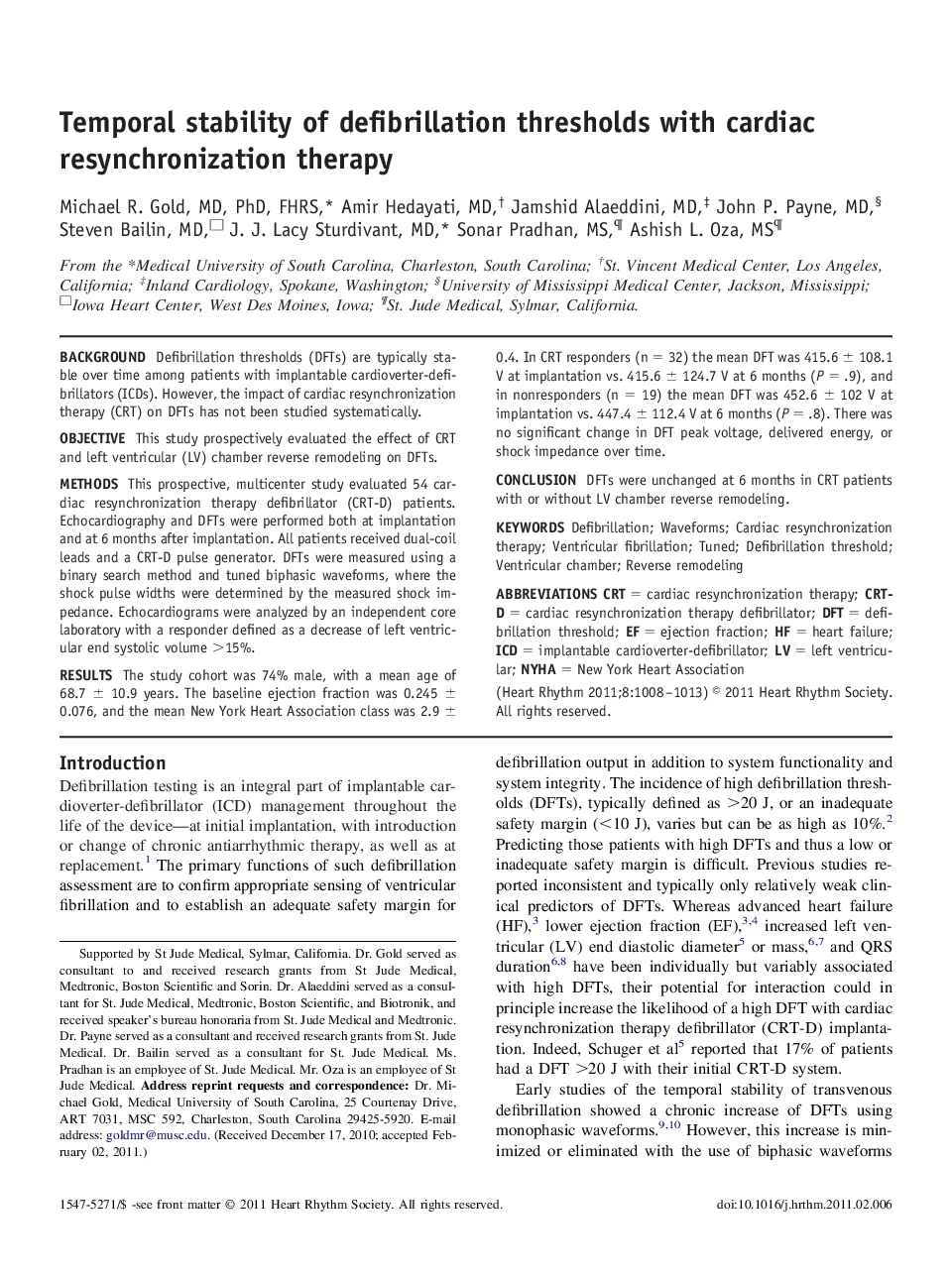| Article ID | Journal | Published Year | Pages | File Type |
|---|---|---|---|---|
| 2922810 | Heart Rhythm | 2011 | 6 Pages |
BackgroundDefibrillation thresholds (DFTs) are typically stable over time among patients with implantable cardioverter-defibrillators (ICDs). However, the impact of cardiac resynchronization therapy (CRT) on DFTs has not been studied systematically.ObjectiveThis study prospectively evaluated the effect of CRT and left ventricular (LV) chamber reverse remodeling on DFTs.MethodsThis prospective, multicenter study evaluated 54 cardiac resynchronization therapy defibrillator (CRT-D) patients. Echocardiography and DFTs were performed both at implantation and at 6 months after implantation. All patients received dual-coil leads and a CRT-D pulse generator. DFTs were measured using a binary search method and tuned biphasic waveforms, where the shock pulse widths were determined by the measured shock impedance. Echocardiograms were analyzed by an independent core laboratory with a responder defined as a decrease of left ventricular end systolic volume >15%.ResultsThe study cohort was 74% male, with a mean age of 68.7 ± 10.9 years. The baseline ejection fraction was 0.245 ± 0.076, and the mean New York Heart Association class was 2.9 ± 0.4. In CRT responders (n = 32) the mean DFT was 415.6 ± 108.1 V at implantation vs. 415.6 ± 124.7 V at 6 months (P = .9), and in nonresponders (n = 19) the mean DFT was 452.6 ± 102 V at implantation vs. 447.4 ± 112.4 V at 6 months (P = .8). There was no significant change in DFT peak voltage, delivered energy, or shock impedance over time.ConclusionDFTs were unchanged at 6 months in CRT patients with or without LV chamber reverse remodeling.
